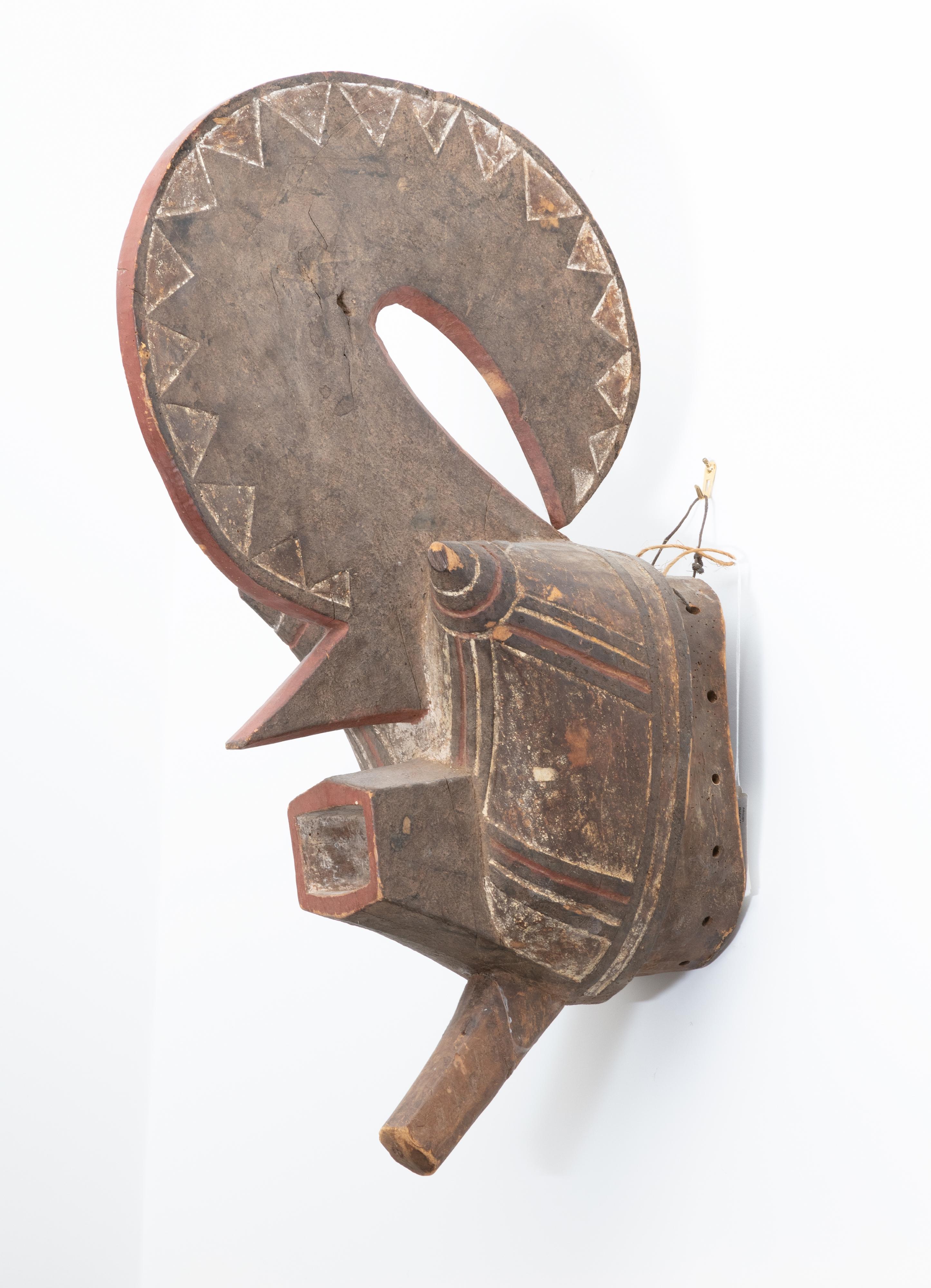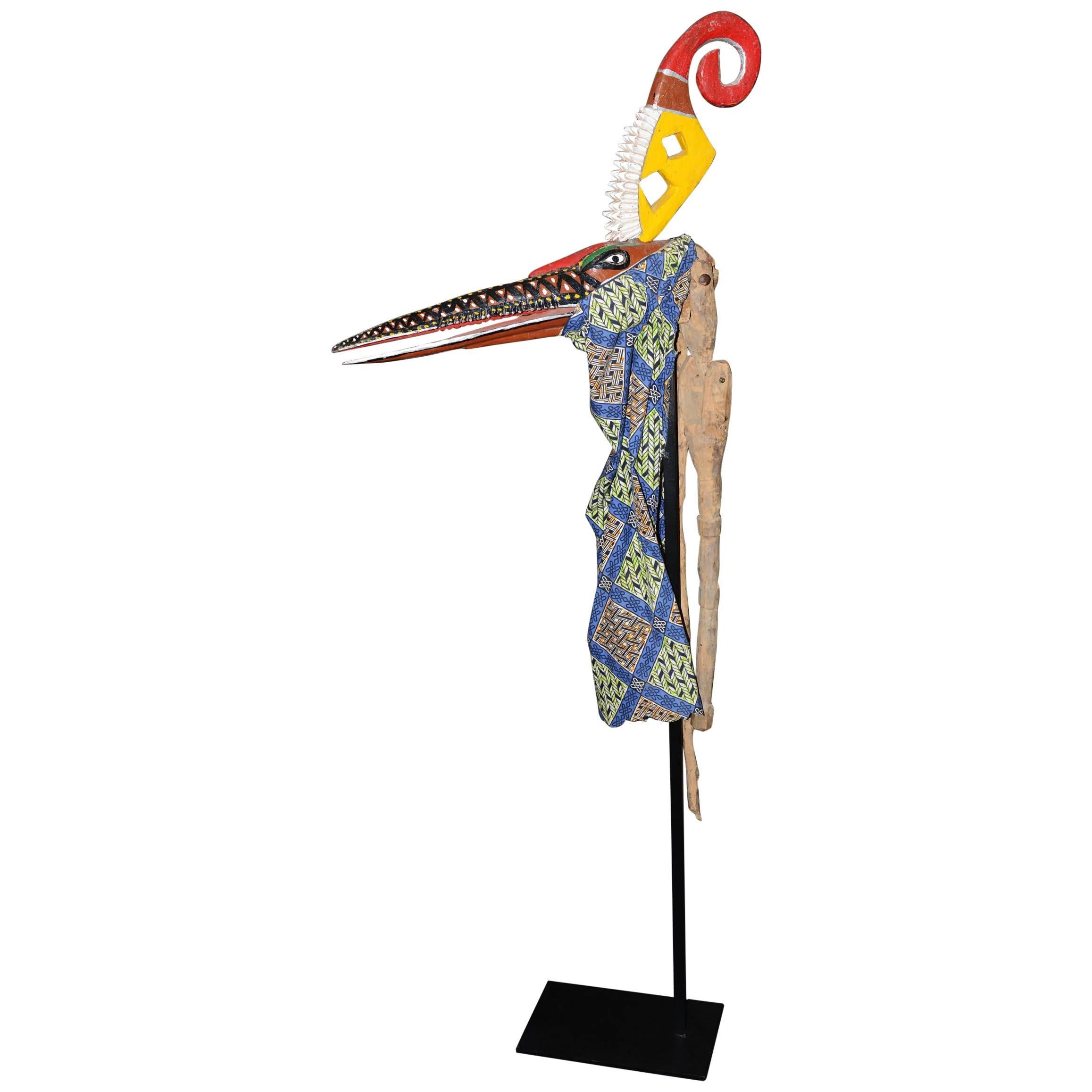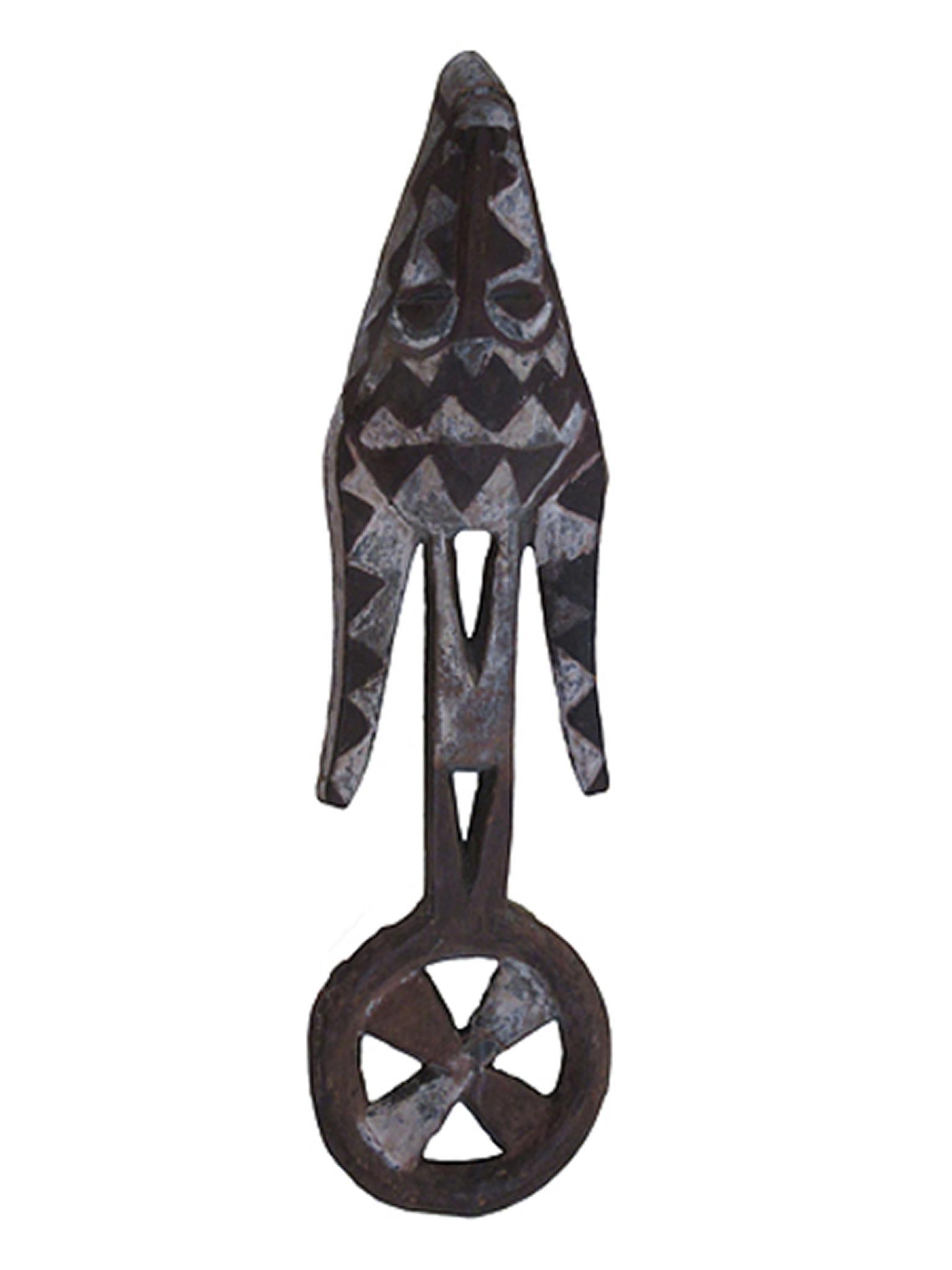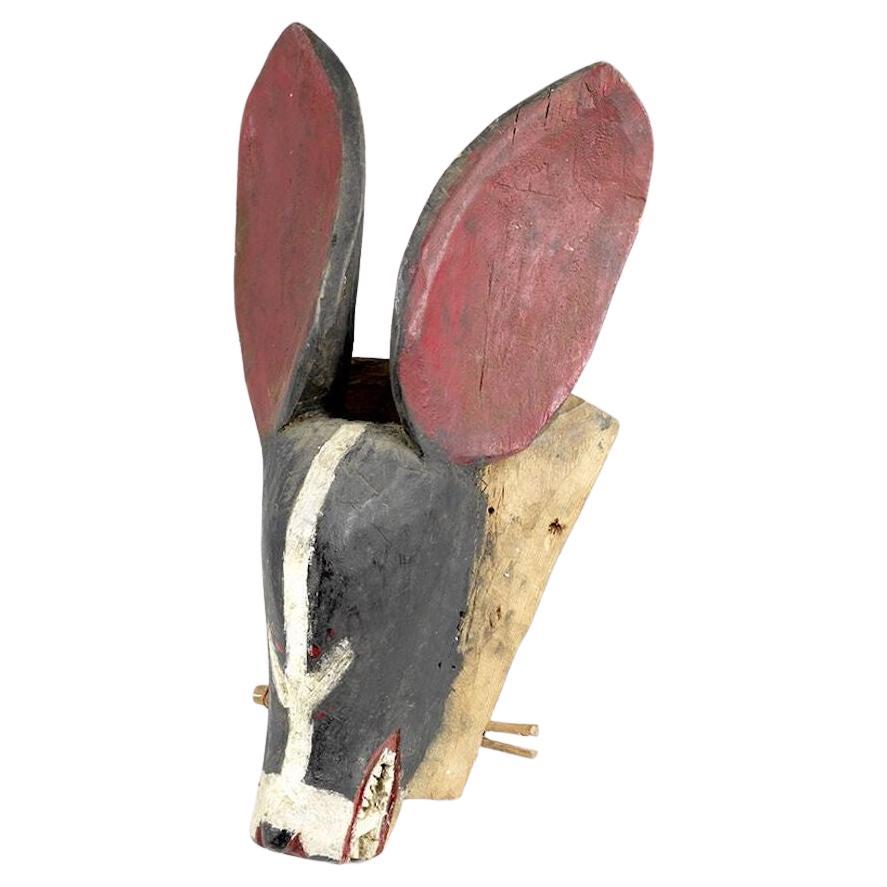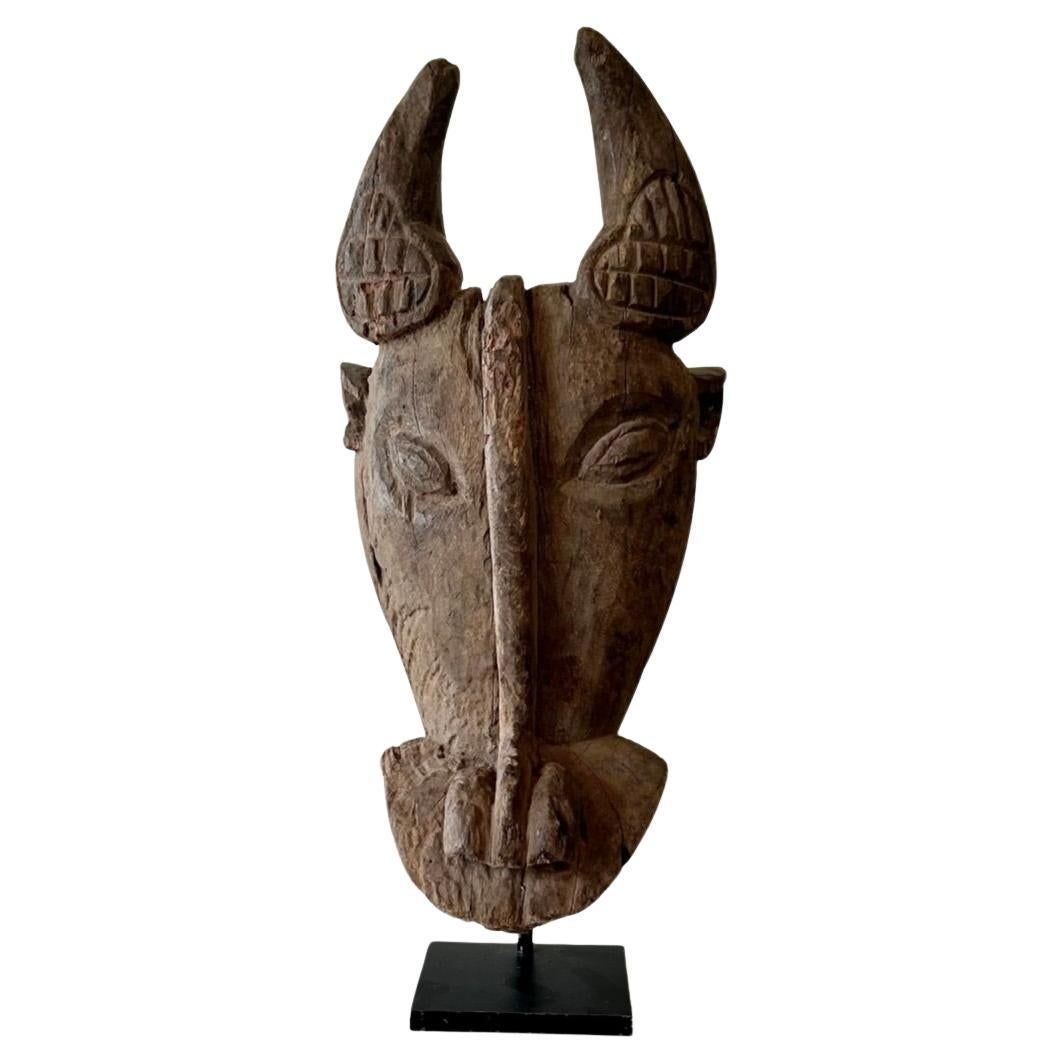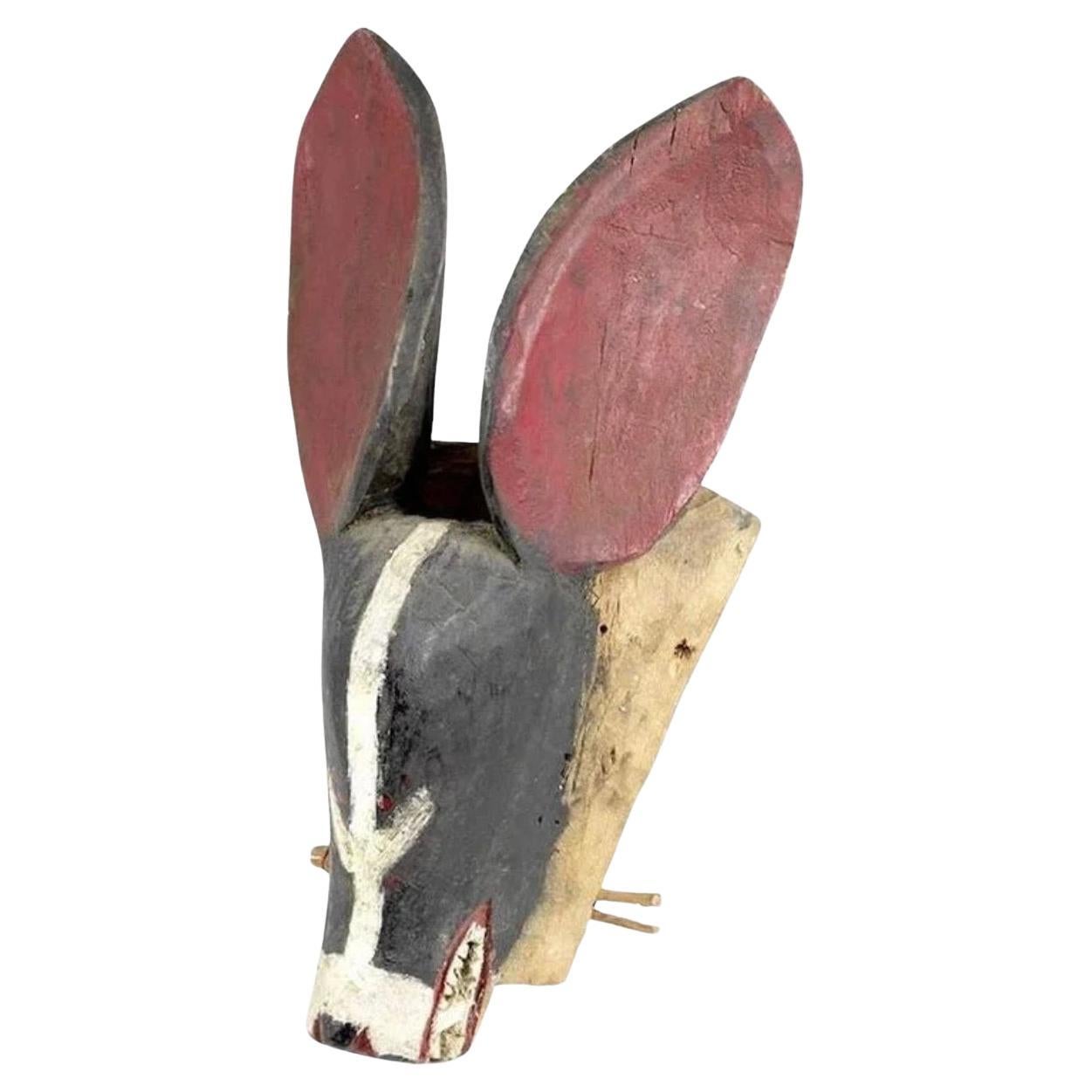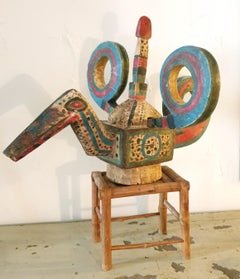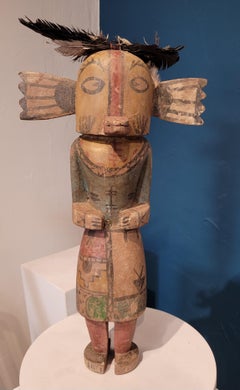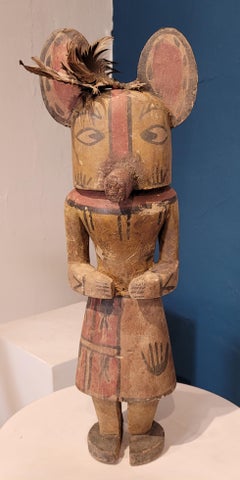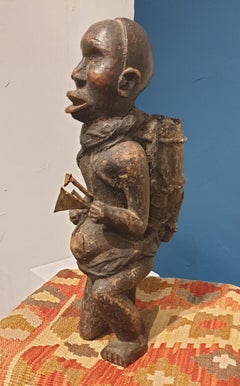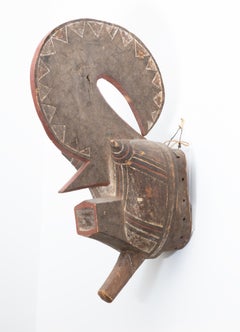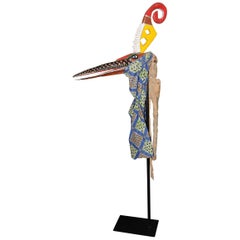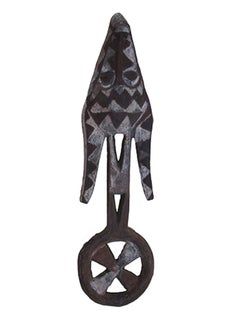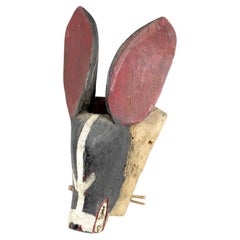Items Similar to African zoomorphic puppet head sculpture from the Bozo Tribe in Mali.
Want more images or videos?
Request additional images or videos from the seller
1 of 11
UnknownAfrican zoomorphic puppet head sculpture from the Bozo Tribe in Mali.Early 20th Century
Early 20th Century
$2,893.94
£2,153.98
€2,420
CA$4,027.02
A$4,392.46
CHF 2,307.47
MX$53,139.75
NOK 28,867.22
SEK 27,256.40
DKK 18,424.91
About the Item
Early 20th century zoomorphic African puppet head sculpture from the Bozo tribe in Mali.
This puppet head would have been used by the Bozo ethnic group during the Sogobo ceremony.
This ancestral tradition continues in the region of Segou in Mali along the Niger river. It is an opportunity to regroup the different villages and give rise to musical and theatrical performances whose highlight is the puppet show.
Far from being profane, each sculpture is intended to honour the spirits of nature so that they protect the people and ensure the abundance of the rains, of fishing and harvesting.
Sogo bó, from sogo: Animal, meaning “the animal comes forth”.
It refers to the mask and puppet theatre that plays a key role in the culture of two peoples closely linked in central Mali: The
Bozos – the fishermen, and the Bamana – the farmers. These plays are a blend of numerous forms of theatrical expression:
Dancing, singing, music, puppets and masquerades (masked dances). In addition to performances governed by the farming season for the Bamanas, and the fishing season for the Bozos, puppet shows are put on to mark important community events: Marriages, circumcision ceremonies which take place every ten years and funeral rituals, etc. All the villagers, regardless of age or gender, can attend the shows, which take place on the village square and sometimes on
the river in the case of the Bozo community.
Once upon a time there were puppets :
The myth surrounding the creation of the puppets is handed down by way of tradition, from one generation to the next:
One day, Toboji Centa, a Bozo fisherman, was abducted by
the genies of the bush. One of them introduced him to the
art of puppetry. On returning to his village located on the
banks of the River Niger, Toboji Centa passed on his newfound
knowledge to his community and taught blacksmiths
and sculptors how to make puppets.
The history of Sogo bó dates back to the 14th c.: Ibn Battûta (1305-1377), a traveller from Tangiers who stayed at the Court of the Mali Empire in 1355, witnessed Sogo bó theatre, which he described as follows:
“... A pleasant approach whereby poets recite their lines
disguised as birds inside a costume of feathers topped by a
wooden head with a red beak” .
Who is hiding behind the puppets?
In some traditional African societies, puppetry is reserved for certain age brackets: In the case of the Bozos and the Bamanas, it is performed specifically by youth groups known as ton, which bring together young men of the same age bracket at puberty. Away from the village, the young people learn from their elders how to identify and manipulate each puppet. They are also taught about the history of puppetry and the symbolic values, songs and
rhythms associated with it. The women do not handle the puppets but play an active role in the performance by singing.
The ton steer the cultural principles of the community as well as rules governing lifestyle at a level where solidarity is of paramount importance.
Man and animals:
Items of the Bozo and Bamana theatres depict a crowd of figures based on both traditional animal-related beliefs and modern society:
The zoomorphic or animal puppets illustrate the symbolic relevance given to animals in the African imagination. Thus in the Bozo fishing communities, the river animals are everpresent: hippopotamus, crocodile, etc.
The anthropomorphous or human puppets represent all the social ranks within the community, from the village chief to the farmer and settler via mythical figures such as Faro, the goddess of water or even Yayoroba, the incarnation of the
feminine spiritual and physical ideal.
The head measures : 63cm tall from the base.
44cm from tip of wooden post to nose tip.
18cm from tip of ear to tip of ear.
Purchased from Pierre Robin ( the renowned Parisian collector of Bozo art ) in the 1970's.
- Creation Year:Early 20th Century
- Dimensions:Height: 24.81 in (63 cm)Width: 7.09 in (18 cm)Depth: 17.33 in (44 cm)
- Medium:
- Period:
- Condition:
- Gallery Location:Cotignac, FR
- Reference Number:Seller: GB/Bozo/Donkey.1stDibs: LU143027147302
About the Seller
5.0
Platinum Seller
Premium sellers with a 4.7+ rating and 24-hour response times
Established in 2000
1stDibs seller since 2020
264 sales on 1stDibs
Typical response time: 1 hour
- ShippingRetrieving quote...Shipping from: Cotignac, France
- Return Policy
Authenticity Guarantee
In the unlikely event there’s an issue with an item’s authenticity, contact us within 1 year for a full refund. DetailsMoney-Back Guarantee
If your item is not as described, is damaged in transit, or does not arrive, contact us within 7 days for a full refund. Details24-Hour Cancellation
You have a 24-hour grace period in which to reconsider your purchase, with no questions asked.Vetted Professional Sellers
Our world-class sellers must adhere to strict standards for service and quality, maintaining the integrity of our listings.Price-Match Guarantee
If you find that a seller listed the same item for a lower price elsewhere, we’ll match it.Trusted Global Delivery
Our best-in-class carrier network provides specialized shipping options worldwide, including custom delivery.More From This Seller
View AllKalao (Great Hornbill) Ibibio Wooden Sculpture, Nigeria.
Located in Cotignac, FR
Mid-Century Ibibio wood carving of a Great Hornbill or (Kalao) from Nigeria. (The carving is shown in the first photo on a bamboo stand which is available if required.)
The Great Ho...
Category
Mid-20th Century Sculptures
Materials
Wood, Paint
Hopi Katsina Doll.
Located in Cotignac, FR
A Native North American carved wood and painted effigy figure, Hopi Katsina or Kachina doll.
A wonderfully playful, coloured and highly individual Hopi Katsina doll. Each doll repr...
Category
Mid-20th Century Figurative Sculptures
Materials
Wood
Hopi Katsina Doll in Carved Cottonwood.
Located in Cotignac, FR
A Native North American carved wood and painted effigy figure, Hopi Katsina or Kachina doll.
A wonderfully playful, coloured and highly individual Hopi Katsina doll. Each doll repr...
Category
Mid-20th Century Figurative Sculptures
Materials
Wood
Statue Songye, Kneeling Male Figure, Democratic Republic of Congo
Located in Cotignac, FR
A Songye Male Power Figure, Democratic Republic of the Congo, the male figure resting on one knee, with openwork arms and hands resting by the abdomen which contains various charms a...
Category
Mid-20th Century Figurative Sculptures
Materials
Metal
$3,635 Sale Price
20% Off
Statue Songye, Republic of Congo, Misangu Glass Beads & Chiefly Raffia Skirt
Located in Cotignac, FR
A Songye Male Power Figure, Democratic Republic of the Congo, the male figure with openwork arms and hands resting on the abdomen, typical facial features and a waterbuck (kobus elli...
Category
Mid-20th Century Tribal Figurative Sculptures
Materials
Metal
$11,480 Sale Price
20% Off
Group of Four Native North American Hopi Katsina (Kachina) Dolls in Canoe..
Located in Cotignac, FR
A group of four Native North American carved wood and painted effigy figures, Hopi Katsina or Kachina dolls paddling their canoe.
Four wonderfully playful, brightly coloured and hig...
Category
Mid-20th Century Tribal Figurative Sculptures
Materials
Wood, Paint
You May Also Like
"Bobo Mask Burkina Fasso-Upper Volta, " Carved & Painted Wood created c. 1945
Located in Milwaukee, WI
"Bobo Mask Burkina Fasso-Upper Volta" is a wood carved sculpture with painted details. It features the image of an abstracted face with a large almost elepha...
Category
1940s Tribal Abstract Sculptures
Materials
Wood
Kote Kono a African Puppets from Mali
Located in Paris, FR
African Puppets Kote Kono A, this "Kote Kono" animal
puppets depicting the hornbill bird with a large beak
during the Sogobo ceremony. This ancestral tradition
continues in the region of Segou in Mali, along the Niger
River and more particularly in the Bozo ethnic group. It is
an opportunity to regroup the different villages and give
rise to musical and theatrical performances whose highlight
is the puppet show...
Category
Vintage 1950s Malian Animal Sculptures
Materials
Fabric, Wood
$5,213 Sale Price
20% Off
"Bobo Mask of Dance, " Wood created in the Volta Region, Ghana in c. 1930
Located in Milwaukee, WI
"Bobo Mask of Dance" is a wood sculpture with painted accents. A human face with two protruding shapes make up the mask, while a long structure sit atop.
37...
Category
1930s Tribal Abstract Sculptures
Materials
Wood
Ivory Coast Zoomorphic Dance Mask, Gouro People
Located in CA, CA
A beautifully painted, stylised ritual dance mask with an assertive presence, used by the Gouro people of the Ivory Coast. The mask is in the form of an African wild dog...
Category
Mid-20th Century Ivorian Tribal Art
Materials
Wood
Burkina Faso Zoomorphic Horse Dance Mask Late 19th Century
Located in CA, CA
A stunning Zoomorphic Dance mask The masks serve to invoke spirit animals, ancestors, or protective deities, bringing their spiritual qualities into the human world. Used in ceremoni...
Category
Antique Late 19th Century African Tribal Tribal Art
Materials
Hardwood
Ivory Coast Zoomorphic Dance Mask, Gouro People, 1950s
Located in CA, CA
A beautifully painted, stylised ritual dance mask with an assertive presence, used by the Gouro people of the Ivory Coast. The mask is in the form of an African wild dog, which, in t...
Category
Mid-20th Century African Tribal Tribal Art
Materials
Hardwood
More Ways To Browse
Figurative Sculpture Head
Wood Head Sculpture
African Wood Sculptures
Mid Century African Sculpture
African Head
Head Metal Sculpture
Puppets Wood
Puppet Theatre
African Metal Art
Mali Wood Sculpture
African Wood Head
Mali African Art
African Head Sculpture
Metal African Sculpture
Yosemite National Park Paintings
1930s Cowboy
1960 Vintage Santa Claus
19th Century Painting Suffolk
